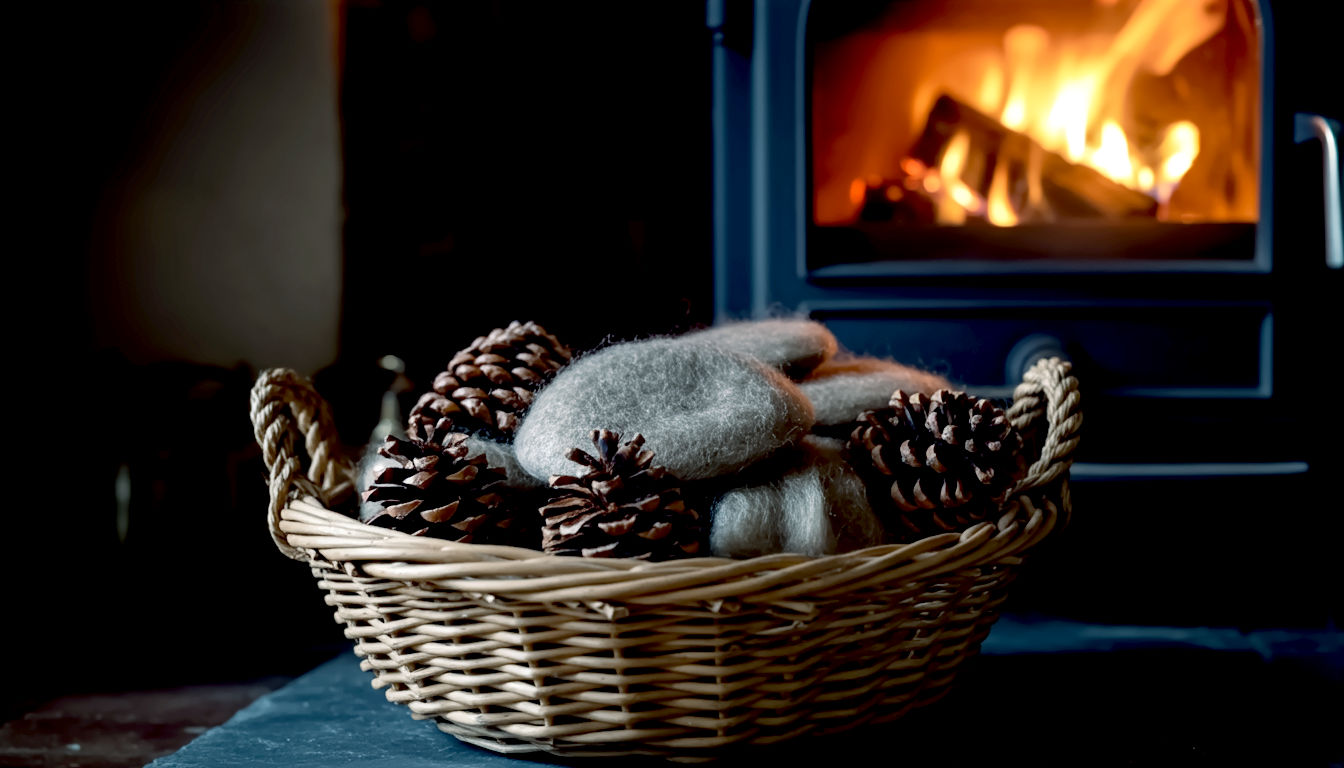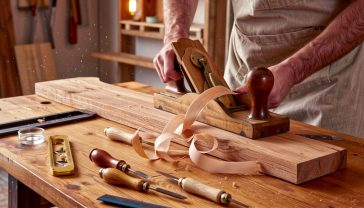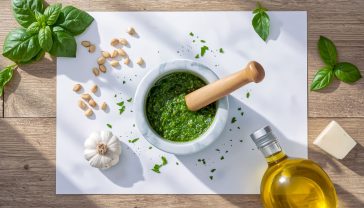Natural Firelighters: The Great British Guide to a Greener Burn
Are natural firelighters worth it? This ultimate guide covers everything you need to know about eco-friendly fire starters, from what they’re made of to how to make your own.

This post may contain affiliate links. If you make a purchase through these links, we may earn a commission at no additional cost to you.
There’s something deeply comforting about a crackling fire. Whether it’s the gentle glow of a wood burner on a dark winter’s night, the cheerful blaze of an open hearth at Christmas, or the smoky sizzle of a summer barbecue, a good fire makes a house a home. It’s a tradition that’s woven into the very fabric of British life.
But as you reach for that box of familiar white firelighter blocks, have you ever paused to think about what’s actually in them? What creates that initial, slightly chemical-smelling flame? For many of us, there’s a growing niggle of unease. We’re all trying to do our bit for the planet – recycling our plastics, choosing seasonal veg, and cutting down on car journeys. So, it feels a bit off to be kicking off our lovely, natural log fire with a block of something derived from crude oil.
This is where natural firelighters come in. They’re popping up everywhere, from local garden centres to posh farm shops, promising a clean, green, and eco-friendly way to get your fire started. But is it all just clever marketing, or are they genuinely a better choice?
This is your ultimate guide. We’re going to get to the bottom of it all. We’ll look at what makes standard firelighters tick, explore the wonderful world of their natural cousins, and even show you how to make your own. So, grab a cuppa, get comfortable, and let’s talk about the future of fire.
The Unseen Problem: What’s Hiding in Your Standard Firelighters?
For decades, the little white blocks of firelighters have been the go-to choice for starting fires across Britain. They’re cheap, effective, and readily available. But their convenience comes at a cost, one that isn’t always obvious.
A Chemical Cocktail: Kerosene and Paraffin
At their core, most conventional firelighters are made from kerosene or paraffin wax, which are both by-products of the petroleum industry. Think of them as the fossil fuel legacy in your fireplace. These substances are mixed with other chemicals and pressed into blocks.
When you light one, you’re essentially burning a small, controlled amount of refined oil. This process releases a number of chemicals into the air, including volatile organic compounds (VOCs). While the amount from a single firelighter is small, the fumes can be unpleasant and contribute to indoor air pollution, which is a growing concern for health experts. It’s that slightly acrid, chemical smell you get just before the wood properly catches.
The Smell, The Soot, and The Lingering Doubts
Beyond the chemical makeup, there are other downsides. The oily residue can leave your hands smelling funny, and they can produce more black soot than their natural counterparts. This soot can build up on the glass of your wood burner and in your chimney over time.
For many, the biggest issue is one of principle. It just feels wrong to use a fossil fuel product to light a renewable energy source like wood. It’s like putting petrol in a brand-new electric car – it works, but it completely misses the point. This is the main reason why so many people are now looking for a cleaner, more sustainable alternative.
The Rise of the Eco-Lighter: A Breath of Fresh Air
Natural firelighters are the answer to these concerns. They are designed to do the same job as conventional lighters but are made from materials that are renewable, sustainable, and much kinder to the environment and your home.
What Are Natural Firelighters Made Of?
Instead of a chemical cocktail, natural firelighters rely on simple, effective, and often very clever combinations of natural materials.
Wood Wool: The Humble Hero
The most common ingredient you’ll find is something called wood wool. It looks a bit like a tangled bird’s nest or fine shredded wheat. It’s essentially very thin shavings of wood, typically pine or spruce. This wood is often a by-product from other industries, meaning it’s a great way to use up waste. Because the shavings are so fine, they have a huge surface area, which means they catch fire incredibly easily.
Natural Waxes: The Sustainable Glue
To get the wood wool to burn for a good amount of time, it’s coated in a natural wax. This wax acts as the fuel, giving the kindling enough time to catch properly. Common waxes include:
- Rapeseed Wax: A popular choice in the UK, as it can be grown and sourced locally from those bright yellow fields you see in the springtime. It’s a great, sustainable option.
- Soy Wax: Another plant-based wax that’s clean-burning and effective. However, it’s worth checking its origin, as soy farming can be linked to deforestation in other parts of the world.
- Beeswax: A fantastic natural product, but it is more expensive and, of course, not vegan. It gives off a lovely, subtle honey scent as it burns.
Recycled Materials: Giving Waste a Second Life
Some natural firelighters are made from other waste materials, such as compressed sawdust, recycled coffee grounds, or shredded cardboard. These are then bound with natural wax to create dense little blocks that burn for a surprisingly long time.
A Field Guide to Natural Firelighters: Know Your Options
While the ingredients are often similar, natural firelighters come in a few different shapes and sizes. Here are the main types you’ll come across.
The Classic: Wood Wool and Wax Twists
These are the most common type and look like little tangled nests or balls of wood wool dipped in wax. They are incredibly effective, lighting almost instantly and burning for a good 8-10 minutes – more than long enough to get a fire going. They are lightweight, clean to handle, and odourless.
- Pros: Very easy to light, long burn time, clean, odourless.
- Cons: Can be slightly more expensive than other types.
The Forager’s Friend: Wax-Dipped Pinecones
A beautifully rustic and effective option. A simple pinecone is dipped in natural wax. The natural structure of the pinecone is perfect for catching a flame, and the wax provides the fuel. They look lovely in a basket by the fire and often have a wonderful, subtle pine scent.
- Pros: Aesthetically pleasing, effective, often made by small, local businesses.
- Cons: Burn time can be slightly less predictable than wood wool.
The DIY Darling: Compressed Sawdust & Cardboard Blocks
These look a bit more like traditional firelighter blocks but are made from compressed sawdust or recycled cardboard and wax. They are very dense and often have an excellent, long burn time. They are a fantastic example of turning waste into a useful product.
- Pros: Excellent burn time, great use of recycled materials, very compact.
- Cons: Can take a fraction longer to light than fine wood wool.
The Luxury Lighter: Beeswax Wraps and Pucks
At the higher end of the market, you can find firelighters made with beeswax. These might be small pucks of waxed sawdust or even scraps from the production of beeswax food wraps. They often have a gorgeous, gentle scent and are a real treat to use.
- Pros: Beautiful smell, very clean-burning, supports beekeepers.
- Cons: Usually the most expensive option.
The Big Question: Are They Really Eco-Friendly? A Closer Look
It’s easy to slap the word ‘eco’ on a product, but what does it actually mean? Let’s break down the environmental claims of natural firelighters. It’s a bit more complicated than you might think.
The Good: The Case for Natural
Sustainable Sourcing: What FSC Really Means
Most reputable natural firelighters are made from wood that is FSC certified. FSC stands for the Forest Stewardship Council. If you see this logo, it means the wood comes from a forest that is managed responsibly. This involves protecting animal habitats, respecting the rights of local communities and indigenous peoples, and ensuring the forests are still there for future generations. It’s a powerful guarantee that you’re not contributing to deforestation.
Cleaner Burning: Less Smoke, Fewer Nasty Fumes
Because they are made from natural wood and wax, these firelighters burn much more cleanly than their chemical counterparts. They don’t release those nasty VOCs, meaning the air in your home stays cleaner. They produce very little smoke and are essentially odourless (apart from a faint woody or honey scent). This also means less soot builds up on your wood burner glass.
Biodegradable Brilliance: Leaving No Trace
Natural firelighters are typically 100% biodegradable. If you take them camping, you don’t have to worry about leaving any nasty chemicals behind. The packaging is also usually recyclable cardboard, avoiding the plastic waste that often comes with conventional firelighters.
The Not-So-Good: A Word of Caution
It’s not all perfect, however. To be a truly savvy shopper, you need to be aware of a few potential pitfalls.
The Wax Debate: Palm Oil, Soy, and ‘Vegan’ Waxes
The type of wax used is crucial. While many companies use sustainable waxes like rapeseed, some cheaper products might use paraffin wax (yes, the same stuff as in normal firelighters!) or unsustainable palm oil. Palm oil production is a major driver of deforestation in Southeast Asia, destroying habitats for orangutans and other endangered species.
Even soy wax can be problematic if it’s not from a sustainable source. The key is to read the label. Reputable brands will be proud to tell you exactly what kind of wax they use. If they just say ‘vegetable wax,’ it’s worth being a little cautious.
The Carbon Footprint of Convenience
Where did your firelighters come from? If they were made in the UK using British wood and rapeseed wax, their carbon footprint will be pretty low. If the materials were shipped halfway around the world, that obviously has an impact. Look for products that are made locally to keep the ‘food miles’ down.
Beware of Greenwashing: How to Spot a Genuinely Green Product
‘Greenwashing’ is when a company makes misleading claims about how eco-friendly their product is. A firelighter might be called ‘natural’ because it contains some wood, but it could still be held together with paraffin wax.
Here’s your cheat sheet to spotting a genuinely green product:
- Check the ingredients: It should clearly state what wood and what wax is used.
- Look for certifications: An FSC logo is a great sign.
- Examine the packaging: Is it minimal and recyclable?
- Research the brand: A quick look at their website should tell you about their environmental values.
The Art of the Perfect Fire: How to Use Natural Firelighters
Using natural firelighters is just as easy as using conventional ones, though the technique is slightly different. They tend to produce a less intense but longer-lasting flame, which is perfect for gently heating the flue and getting the kindling to catch properly.
For the Wood Burner or Stove
- Open the Vents: Make sure all the air vents on your stove are fully open. A fire needs oxygen to get going.
- Place the Firelighter: Put one or two natural firelighters in the centre of the stove base.
- Build Your Kindling: Take small, dry sticks of kindling (about the thickness of your finger) and build a small structure around and over the firelighters. A classic ‘Jenga tower’ or pyramid shape works brilliantly as it allows air to circulate.
- Light It Up: Light the firelighter(s). Because they are natural, they might take a second longer to catch than a chemical lighter, so hold the flame to them for a few moments.
- Add Logs: Once the kindling is burning strongly, gently add one or two small, dry logs. Don’t overcrowd the fire.
- Close the Door: Shut the door of the stove. Once the main logs have caught fire and the stove has reached a good temperature, you can start to close down the air vents to control the burn rate.
For the Classic Open Fireplace
The principle is very similar. You’ll want to start with a bed of ash if possible, as this helps the fire to establish.
- Create a Base: If you have a grate, place the firelighters underneath it or directly on it.
- Build the Structure: Place kindling over the firelighters, followed by smaller logs, building up in a pyramid structure.
- Light and Wait: Light the firelighters and wait for the flames to spread upwards through the kindling to the logs. An open fire needs plenty of air, so don’t pack the wood too tightly.
For the Great British BBQ
Natural firelighters are a game-changer for barbecues, especially if you’re cooking with charcoal.
- Avoid Lighter Fluid: Please, never use lighter fluid. It imparts a horrible chemical taste to your food.
- The Chimney Starter Method: The best way to light charcoal is with a chimney starter. Stuff some newspaper in the bottom, but for a guaranteed light, place one or two natural firelighters there instead.
- Place and Light: Place the chimney on the BBQ grate, fill it with charcoal, and light the firelighters through the holes at the bottom.
- Wait for the Glow: In about 15-20 minutes, the charcoal at the top of the chimney will be covered in a layer of white ash. That’s when it’s ready. Carefully pour the hot coals into your barbecue. You’ll have a perfect, chemical-free heat for cooking.
Get Your Hands Dirty: Your Guide to Making Homemade Natural Firelighters
Making your own natural firelighters is incredibly satisfying, cheap, and a brilliant way to use up household waste. It’s a fantastic activity for a rainy afternoon.
Safety First! A Crucial Warning
You will be working with melted wax, which is very hot and flammable.
- NEVER melt wax directly in a pan on the hob. It can easily overheat and catch fire.
- ALWAYS use a double boiler. This is where you place a heatproof bowl or an old tin can over a saucepan of simmering water. The steam gently melts the wax, making it much safer.
- NEVER leave melting wax unattended.
- This is a job for adults. Keep children and pets at a safe distance.
- Protect your surfaces with plenty of newspaper.
Recipe 1: The Egg Carton & Dryer Lint Firestarter
This is the ultimate recycling project. It uses three things you would normally throw away.
You Will Need:
- A cardboard egg carton (not the plastic or styrofoam kind!)
- Dryer lint (the fluff you collect from the filter of your tumble dryer)
- Old candle stubs, or wax pellets (soy or rapeseed work well)
Instructions:
- Stuff a small ball of dryer lint into each cup of the egg carton.
- Carefully melt your wax using the double boiler method.
- Once the wax is fully melted, very carefully pour it over the lint in each egg cup. Pour just enough to saturate the lint and cardboard.
- Leave the carton to cool completely for a few hours until the wax is rock solid.
- Once set, you can tear off the individual cups. Each cup is one firestarter.
Recipe 2: The Waxed Cotton Pad Disc
Simple, neat, and very effective.
You Will Need:
- Plain cotton wool pads (the flat, round cosmetic ones)
- Melted wax (beeswax gives a lovely scent for this one)
- A pair of tongs
Instructions:
- Melt your wax using the double boiler method.
- Lay out a sheet of baking parchment or greaseproof paper.
- Using the tongs, pick up a cotton pad and dip it into the melted wax.
- Let it get fully saturated, then lift it out, allow the excess to drip off, and place it on the baking parchment to cool.
- Repeat for as many as you want to make. They cool very quickly.
Recipe 3: The Festive Pinecone Lighter
These look beautiful and make wonderful, thoughtful gifts at Christmas.
You Will Need:
- Small, dry, open pinecones (forage for them on a dry day)
- Melted wax
- Optional: a few drops of cinnamon or orange essential oil
- A length of cotton wick (optional, but helpful)
Instructions:
- Make sure your pinecones are completely dry. If in doubt, you can bake them on a low heat (around 100°C) for an hour to dry them out and open them up. Let them cool completely.
- Melt your wax. If you’re adding a scent, stir in the essential oil once the wax is melted and off the heat.
- If you’re using a wick, wrap a small piece around the top of the pinecone.
- Holding the base, dip the pinecone into the wax repeatedly, building up a few layers.
- Place on baking parchment to set.
The Savvy Shopper’s Guide: Buying the Best Natural Firelighters in the UK
If DIY isn’t your thing, don’t worry. It’s easier than ever to buy high-quality natural firelighters.
What to Look For on the Packet
- Wax Type: Does it say what wax is used? Look for rapeseed, soy, or beeswax. Be wary of ‘vegetable wax’ or no mention at all.
- Wood Source: Is the wood FSC certified? This is the gold standard.
- Country of Origin: ‘Made in the UK’ is a good sign for a lower carbon footprint.
- Packaging: Is it plastic-free and recyclable?
- Quantity: They often come in boxes of 50 or 100, which can be very cost-effective.
Where to Buy Them: From Garden Centres to Online Shops
You can find natural firelighters in a growing number of places:
- Hardware Shops: Places like B&Q and Homebase often have a good selection.
- Garden Centres: Almost all garden centres now stock at least one brand of natural firelighter.
- Supermarkets: Larger supermarkets are starting to carry them, especially in the winter months.
- Farm Shops & Delis: These often stock high-quality, locally made versions.
- Online Eco-Stores: Websites dedicated to sustainable products have the widest selection.
- Direct from the Manufacturer: Many small UK businesses sell their firelighters online.
The Verdict: So, Are Natural Firelighters the Future of Fire?
We’ve covered a lot of ground. So, let’s get back to our original question: are natural firelighters the eco-friendly way to start your fire?
The answer is a resounding yes, but with a small caveat.
A genuinely natural firelighter, made from FSC-certified wood and a sustainable, locally-sourced wax like rapeseed, is leagues ahead of a conventional, kerosene-based firelighter. It’s better for the planet, better for the air quality in your home, and supports a more sustainable way of life. They are clean, effective, and a pleasure to use.
Weighing the Pros and Cons
Pros:
Cons:
Our Final Takeaway
Switching to natural firelighters is one of the easiest and most impactful changes you can make to your fire-lighting routine. It’s a small step that makes a real difference. It’s not about being perfect, but about making a better choice where we can.
By choosing a well-made, genuinely sustainable natural firelighter, you can sit back and enjoy that comforting, crackling blaze with the peace of mind that comes from knowing you started it in the best way possible – for your home, your family, and the planet.
Frequently Asked Questions (FAQ)
How many natural firelighters do I need to start a fire? Usually, just one is enough if you have good, dry kindling. If your wood is a little damp or you’re in a hurry, using two will give you a stronger start.
Are natural firelighters safe for cooking on a BBQ? Absolutely! In fact, they are far safer and better than chemical firelighters or lighter fluid, as they won’t leave any chemical taste or residue on your food.
Do natural firelighters have a shelf life? As long as you keep them in a dry place, they will last indefinitely.
Can I use them on a smoke-controlled stove? Yes. Because they burn so cleanly and produce very little smoke, they are perfect for use in modern, DEFRA-approved stoves in smoke control areas.
Are they safe to use with pizza ovens? Yes, they are ideal. Their odourless and chemical-free nature means there’s no risk of tainting the flavour of your pizza base.
Further Reading
For those interested in diving deeper into sustainable woodland management and eco-friendly living, here are some highly respected UK resources:
- The Woodland Trust: The UK’s largest woodland conservation charity, with extensive information on British trees and sustainable forestry.
- Forest Stewardship Council (FSC) UK: Learn exactly what the FSC certification means and why it matters for wood products.
- The Energy Saving Trust: Provides impartial advice on how to heat your home more efficiently and sustainably, including tips on using wood burners.
- BioRegional’s One Planet Living: A framework for sustainable living, offering insights into reducing your environmental impact in all aspects of life.






